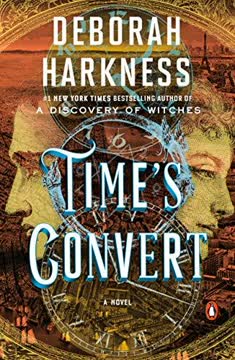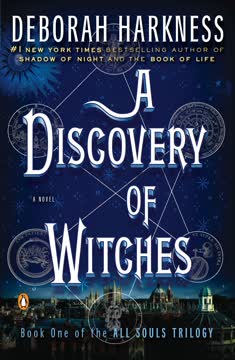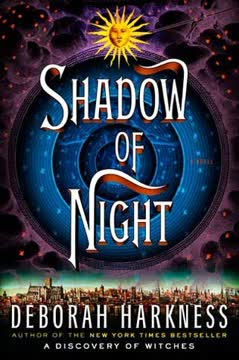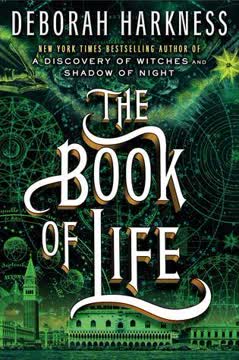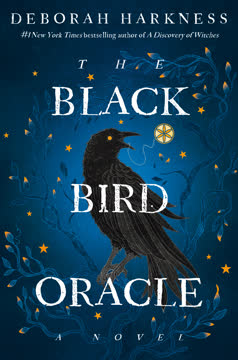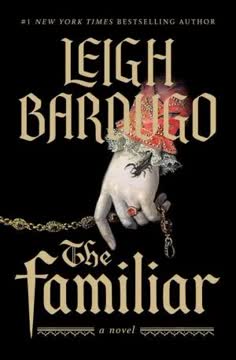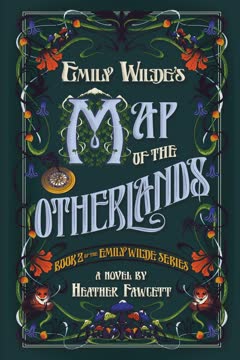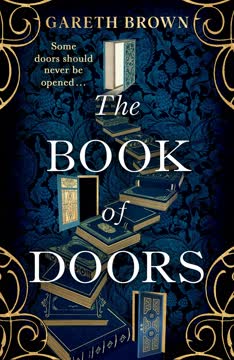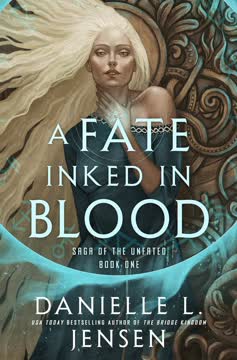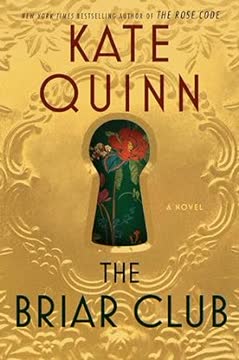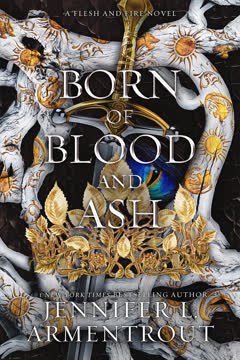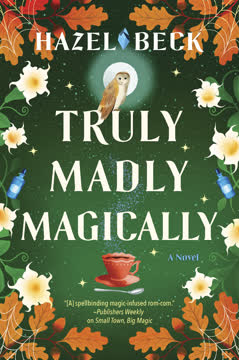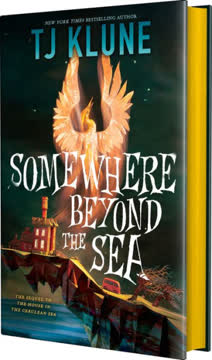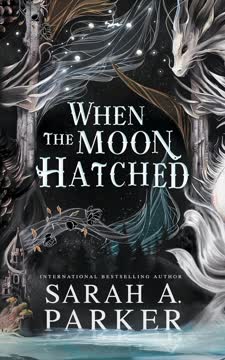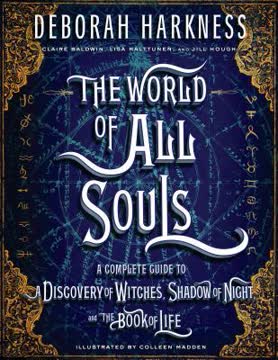Plot Summary
Last Night as Warmblood
On the eve of her transformation, Phoebe Taylor, surrounded by her family and the de Clermont vampires, faces the poignant, ceremonial goodbye to her mortal life. The dinner is elegant but heavy with unspoken anxieties and love. Her family's reactions range from stoic support to materialistic concern, while Phoebe herself is torn between excitement for eternity with Marcus and the pain of leaving her old world behind. The night is filled with rituals, secret phone calls, and the weight of tradition, setting the stage for her leap into the unknown.
Becoming Vampire: The Change
Phoebe's conversion is clinical yet mystical, overseen by Miriam and Freyja. The process is both excruciating and transcendent, as Phoebe's body is remade by vampire blood. She experiences a profound sense of loss and yearning, but also a new, slow, deliberate heartbeat—her first as a vampire. The narrative explores the physical and psychological violence of becoming something other, and the immediate, overwhelming sensory changes that follow. Her first days are marked by confusion, hunger, and the struggle to control her new instincts.
Marcus's Revolutionary Roots
Parallel to Phoebe's transformation, Marcus's story unfolds: born Marcus MacNeil in colonial Massachusetts, he grows up under the shadow of a harsh, traumatized father. The narrative delves into his childhood, the violence and discipline of the era, and his yearning for freedom. Marcus's journey from obedient son to revolutionary is shaped by the American War of Independence, his friendships, and his exposure to Enlightenment ideals. His early life is a crucible of pain, rebellion, and the search for belonging.
The Sins of the Fathers
Marcus's relationship with his father, Obadiah, is fraught with abuse and the legacy of war. The chapter explores how the sins and scars of one generation are passed to the next, culminating in Marcus's act of patricide to protect his mother and sister. This act severs him from his past and propels him into a life on the run, where he must forge a new identity. The narrative draws parallels between Marcus's personal history and the broader revolutionary struggle for liberty and self-determination.
Vampire Traditions and Trials
As Phoebe adapts to her new existence, she is thrust into the labyrinth of vampire etiquette and tradition. Her every move is scrutinized, her environment tightly controlled to prevent disaster. The de Clermonts' rules—no contact with Marcus for ninety days, strict feeding protocols, and the necessity of choosing a new name—are both protective and oppressive. Phoebe's struggle mirrors Marcus's earlier battles with authority, highlighting the tension between individual desire and communal expectation.
The Prodigal's Past
The narrative shifts between the present and the past, as Diana, Matthew, and their magical children navigate the complexities of their blended family. The twins' emerging powers, the appearance of magical familiars, and the ghosts of the past all converge. Marcus's memories, tangled and painful, affect the fabric of time itself, while Diana's children begin to weave spells instinctively. The chapter explores the interplay of memory, magic, and the psychological inheritance of trauma.
Blood, Family, and Freedom
Marcus's journey through the American Revolution, his transformation into a vampire by Matthew, and his subsequent education in France are recounted. He is shaped by the ideals of liberty and equality, but also by the rigid hierarchies of vampire society. His relationships—with mentors, lovers, and his new family—are fraught with longing for acceptance and the fear of repeating old patterns. The narrative interrogates what it means to be free, and the price paid for family and immortality.
The Making of a Healer
Marcus's calling as a healer emerges from the chaos of war and the suffering he witnesses. His education in Edinburgh, his work during epidemics, and his attempts to save lives—both human and vampire—define his sense of purpose. Yet his efforts to create a new, egalitarian vampire family in New Orleans end in tragedy, as the dangers of unchecked power and the consequences of breaking vampire law catch up with him. The chapter is a meditation on duty, compassion, and the limits of idealism.
Revolution, Loss, and Rebirth
The French Revolution provides the backdrop for Marcus's passionate but doomed relationship with Veronique, a fiercely independent vampire. As Paris descends into violence, Marcus is forced to choose between love and loyalty to the de Clermonts. The narrative explores the dangers of political idealism, the pain of exile, and the necessity of letting go. Marcus's repeated losses—of lovers, friends, and children—underscore the loneliness of immortality and the difficulty of forging lasting connections.
The Price of Immortality
Marcus's attempts to build a new vampire family in America, particularly in New Orleans, are marked by both hope and hubris. His "children" are a diverse, unruly group, reflecting his revolutionary ideals, but their existence draws the deadly attention of the de Clermonts. Matthew and Juliette's intervention leads to the destruction of Marcus's family, teaching him the hard lesson that immortality comes with strict rules and devastating consequences. The chapter examines the ethics of power, the dangers of unchecked creation, and the enduring need for belonging.
Modern Love, Ancient Rules
As Phoebe matures as a vampire, her longing for Marcus intensifies. The narrative explores the erotic and emotional dimensions of their bond, the challenges of adapting to a new body and identity, and the ever-present weight of tradition. Their eventual reunion is both a personal triumph and a ritualized public event, blending modern love with ancient ceremony. The chapter highlights the tension between individual happiness and communal responsibility, and the ways in which love must be negotiated within the constraints of history.
The New Vampire's Struggles
Phoebe's adaptation to vampire life is marked by frustration, boredom, and the slow mastery of her new abilities. She grapples with the loss of her human senses, the challenge of feeding ethically, and the need to find purpose beyond survival. Her relationships with her mentors—Miriam, Freyja, Ysabeau, Françoise—become sources of both support and conflict. The chapter is a nuanced exploration of identity, agency, and the search for meaning in a life that is suddenly unbounded by time.
Family, Power, and Control
Diana and Matthew's struggles to raise their magical twins, the ongoing tensions with Baldwin and the de Clermont hierarchy, and the ever-present specter of blood rage and spellbinding are explored. The narrative interrogates the ethics of control—over children, over family, over the future—and the dangers of repeating the mistakes of the past. The family's efforts to balance freedom and safety, tradition and innovation, are mirrored in Phoebe and Marcus's journey toward partnership.
The Hidden Hand Revealed
The theme of the "hidden hand"—the unseen forces that shape lives, whether parental, magical, or historical—comes to the fore. Marcus confronts the ways in which Philippe, Matthew, and even Diana have tried to direct his fate. The narrative explores the pain of betrayal, the necessity of forgiveness, and the possibility of breaking free from old patterns. The family's collective reckoning with their pasts opens the door to a more honest, if uncertain, future.
Choosing Life, Choosing Love
As Phoebe nears the end of her fledgling period, she is faced with the ultimate choice: to embrace her new life fully, with all its risks and responsibilities, or to retreat into the safety of the past. Ysabeau's wisdom, the support of her chosen family, and her own growing sense of selfhood guide her. The chapter is a celebration of agency, the courage to say no, and the power of choosing one's own path—even when it means accepting loss and imperfection.
Reunion and Evermore
Phoebe and Marcus's long-awaited reunion is both passionate and transformative. Their mating is a ritual of blood and trust, a merging of past and future, self and other. The narrative lingers on the sensory and emotional intensity of their union, the sense of time suspended, and the promise of "evermore." Their love, hard-won and tested by tradition, trauma, and separation, becomes the foundation for a new kind of family—one that honors both freedom and connection.
Homecoming: Past and Future
The final chapter brings Phoebe and Marcus to Marcus's childhood home in Hadley, Massachusetts. The house, lovingly preserved, is both a site of memory and a blank slate for their future. The ghosts of the past are acknowledged, but not allowed to dictate the present. The couple's choice to make a life together, grounded in honesty and mutual respect, is a quiet but radical act. The story ends with the promise of "evermore"—a future shaped not by the hidden hand of history, but by the choices they make together.
Characters
Phoebe Taylor
Phoebe is the novel's central lens for the experience of becoming a vampire. Her journey is one of radical change: from a modern, ambitious, loving human to a fledgling vampire navigating ancient customs and overwhelming new senses. Her relationship with Marcus is both anchor and catalyst, driving her to embrace eternity while wrestling with the loss of her old life. Psychologically, Phoebe is marked by a deep need for agency and meaning, resisting both the passivity of tradition and the temptations of power. Her development is a study in adaptation, resilience, and the courage to choose life on her own terms.
Marcus MacNeil/Whitmore
Marcus's arc is a tapestry of trauma, rebellion, and hope. Born into violence and oppression, he seeks freedom first through revolution, then through medicine, and finally through the creation of a new kind of vampire family. His relationships—with his abusive father, his mentors, his lovers, and his vampire kin—are fraught with longing for acceptance and the fear of repeating old patterns. Marcus is both haunted and driven by the past, but ultimately finds redemption in love, healing, and the willingness to break the cycle of control. His psychological journey is one of integration: reconciling the wounds of childhood with the responsibilities of immortality.
Matthew de Clermont
Matthew is both Marcus's maker and Diana's husband, embodying the tensions between tradition and change, power and vulnerability. His own history of trauma, blood rage, and loss shapes his approach to fatherhood and leadership. Matthew's struggle is to balance the need for control with the imperative to let go, to protect without suffocating, and to love without destroying. His relationship with Marcus is especially complex, oscillating between authority, guilt, and genuine paternal affection. Matthew's development is a meditation on the limits of power and the necessity of forgiveness.
Diana Bishop
Diana is the emotional and magical center of the Bishop-Clairmont family. Her journey is one of self-discovery, as she learns to wield her power responsibly and to raise her magical children without repeating the mistakes of her own parents. Diana's role as a weaver—of magic, of family, of history—mirrors her psychological work of integrating past and present, trauma and healing. Her relationship with Matthew is a model of partnership, marked by negotiation, honesty, and mutual respect. Diana's arc is a testament to the power of knowledge, compassion, and the refusal to be bound by fear.
Ysabeau de Clermont
Ysabeau is the oldest and wisest vampire, a living repository of history and tradition. Her role is both nurturing and exacting, guiding Phoebe through the trials of fledglinghood while insisting on the importance of choice and self-mastery. Ysabeau's own losses—of Philippe, of children, of a world that no longer exists—give her a depth of empathy and a fierce commitment to survival. She is both a model and a warning, embodying the costs and rewards of immortality.
Freyja de Clermont
Freyja is a force of nature: practical, witty, and fiercely protective. She serves as both mentor and foil to Phoebe, advocating for a balance between tradition and adaptation. Freyja's own history of violence and survival informs her approach to power and family, and her relationship with Phoebe is marked by both affection and tough love. She represents the possibility of change within the constraints of ancient custom.
Miriam Shephard
Miriam is Phoebe's sire and a figure of both authority and ambivalence. Her approach to motherhood is clinical, data-driven, and at times emotionally distant, shaped by centuries of loss and the trauma of her mate's death. Miriam's relationship with Phoebe is a study in the limits of control and the necessity of letting go. She is both a gatekeeper and a liberator, challenging Phoebe to find her own path.
Baldwin de Clermont
Baldwin is the head of the de Clermont family, embodying the weight of history and the dangers of rigid hierarchy. His interactions with the younger generation are marked by both genuine concern and a tendency toward authoritarianism. Baldwin's arc is one of gradual, grudging adaptation, as he is forced to confront the limits of his power and the necessity of change.
Françoise
Françoise is the quiet backbone of the de Clermont household, embodying the dignity and freedom that come from self-chosen service. Her relationship with Phoebe is both practical and profound, offering lessons in humility, competence, and the value of invisible labor. Françoise's psychological strength lies in her acceptance of her own desires and her refusal to be defined by others' expectations.
Ransome Fayreweather
Ransome is Marcus's most successful "child," a gambler and entrepreneur who thrives in the chaos of New Orleans. His relationship with Marcus is one of brotherhood and mutual respect, marked by humor, loyalty, and a shared commitment to building something new. Ransome represents the possibility of found family, the dangers of excess, and the enduring appeal of freedom.
Plot Devices
Dual Narrative Structure
The novel alternates between Phoebe's contemporary journey of transformation and Marcus's historical backstory, using parallel timelines to explore themes of change, trauma, and belonging. This structure allows the reader to see the echoes between generations, the persistence of certain patterns, and the ways in which the past shapes the present. The dual narrative also creates suspense, as revelations in one timeline illuminate mysteries in the other.
Ritual and Tradition
The story is structured around a series of rituals—farewells, transformations, naming, mating, and reunions—that serve to both bind and test the characters. These ceremonies are sources of both comfort and oppression, highlighting the tension between individual desire and communal expectation. The repeated invocation of tradition forces characters to confront what is worth preserving and what must be changed.
Bloodlore and Memory
The act of drinking blood is not merely physical but psychic, allowing vampires to access the memories, traumas, and desires of others. This device is used to explore the transmission of trauma, the possibility of empathy, and the dangers of losing oneself in another's past. Bloodlore also serves as a metaphor for the ways in which family, history, and love are both gifts and burdens.
Magical Realism and Familial Magic
The presence of magic—spells, familiars, time manipulation—serves to literalize psychological and emotional realities. The magical children, the appearance of the griffin Apollo, and the spontaneous weaving of spells all function as externalizations of internal states: anxiety, hope, the desire for control. Magic is both a source of wonder and a reminder of the unpredictability of life.
The Hidden Hand
The motif of the "hidden hand"—whether parental, magical, or historical—recurs throughout the novel. Characters are repeatedly confronted with the ways in which their lives have been shaped by forces beyond their control, and must decide whether to accept, resist, or transform those influences. The device is used to interrogate the ethics of power, the possibility of freedom, and the necessity of forgiveness.
Foreshadowing and Recurrence
The novel is rich in foreshadowing, with early events and conversations resonating in later chapters. The repetition of certain images (the red door, the clock, the act of naming) creates a sense of continuity and inevitability, while also inviting the possibility of change. The structure encourages the reader to look for patterns, to question the difference between fate and choice, and to hope for the breaking of cycles.
Analysis
Time's Convert is a meditation on transformation—personal, historical, and generational. Through the intertwined stories of Phoebe and Marcus, Deborah Harkness explores the costs and rewards of change: the pain of leaving behind old identities, the struggle to adapt to new realities, and the enduring need for connection and meaning. The novel interrogates the tension between tradition and innovation, the dangers of unchecked power, and the possibility of forging new kinds of family and community. At its heart, the book is about the courage to choose life—again and again—despite loss, trauma, and uncertainty. Harkness suggests that true freedom is not the absence of constraint, but the ability to make one's own choices within the web of history, love, and responsibility. The lessons of the past are not chains, but tools for building a more honest, compassionate future. In a world where time makes more converts than reason, the greatest act of rebellion is to choose evermore.
Last updated:
FAQ
Synopsis & Basic Details
What is Time's Convert about?
- A Vampire's Origin: Time's Convert delves into the complex backstory of Marcus Whitmore, a vampire and son of Matthew de Clermont, tracing his life from his human origins in colonial America through his transformation and centuries of existence. The narrative explores his experiences during the American and French Revolutions, his attempts to build a family, and the profound impact of his past on his present.
- A Fledgling's Journey: Simultaneously, the novel follows Phoebe Taylor, a modern warmblood, as she undergoes the arduous and transformative process of becoming a vampire to be with Marcus. Her journey is one of intense sensory and emotional adjustment, guided by the de Clermont matriarchs, as she grapples with her new identity and the ancient traditions of vampire society.
- Love Across Time: At its core, the book is a story of enduring love and the challenges of forging a lasting partnership across vast stretches of time and different species. It explores how individual choices, family legacies, and historical events intertwine to shape identity and destiny, culminating in Marcus and Phoebe's reunion and their shared future.
Why should I read Time's Convert?
- Rich Historical Immersion: Readers seeking a deep dive into historical periods, particularly the American and French Revolutions, will find Marcus's firsthand accounts captivating. The novel offers a unique perspective on these pivotal moments through the eyes of an immortal, revealing subtle details and personal impacts often missed in traditional histories.
- Profound Character Development: The book excels in psychological depth, offering a nuanced exploration of Marcus's trauma, his search for belonging, and his evolution as a healer and father figure. Phoebe's journey of self-discovery as a new vampire provides a compelling parallel, showcasing her resilience and agency in adapting to a radically altered existence.
- Expanded All Souls Universe: For fans of Deborah Harkness's All Souls series, this novel enriches the lore by providing crucial backstory for beloved characters like Marcus, Matthew, and Ysabeau. It deepens the understanding of vampire society, blood rage, and the intricate web of de Clermont family dynamics, offering fresh insights into the broader narrative.
What is the background of Time's Convert?
- Revolutionary War Context: The novel is deeply embedded in the American Revolutionary War, portraying Marcus's experiences as a soldier and surgeon. It highlights the brutal realities of war, the spread of diseases like smallpox, and the philosophical ideals of liberty and equality that shaped the nascent United States, often contrasting them with the realities of slavery and social hierarchy.
- Enlightenment and French Revolution: Marcus's later life in France is set against the backdrop of the French Revolution, exploring the radical shifts in political thought and the escalating violence of the Terror. The narrative touches on key figures like Thomas Paine and Jean-Paul Marat, examining the complexities of revolutionary fervor and its impact on individuals and society.
- Vampire Social Structures: The book provides extensive detail on the intricate social and traditional structures of vampire society, particularly the de Clermont family. It illustrates the strict rules governing vampire creation, mating, and inter-species relations, emphasizing the "hidden hand" of powerful elders like Philippe and Baldwin in shaping the lives of younger vampires.
What are the most memorable quotes in Time's Convert?
- "Time makes more converts than reason." (Epigraph, Thomas Paine): This quote, serving as the novel's epigraph, encapsulates a central theme: the slow, inexorable power of time to change perspectives and beliefs, often more effectively than logical argument. It foreshadows the profound transformations characters undergo, particularly Marcus's long journey of self-acceptance and Phoebe's adaptation to immortality.
- "To be a vampire you must choose life—your life, not someone else's—over and over again, day after day." (Ysabeau, Chapter 35): Ysabeau's profound wisdom distills the essence of vampire existence, emphasizing relentless self-preservation and agency. This quote highlights the core theme of choosing one's path and identity, even in the face of immortality, and resonates deeply with Phoebe's journey of self-determination.
- "The only true fence against the world and all its dangers is a thorough knowledge of it." (Matthew, Chapter 37): Matthew's pragmatic insight underscores the importance of understanding the world's complexities, rather than seeking to control or hide from them. This quote reflects the de Clermont family's long history of navigating dangerous realities and serves as a guiding principle for raising the Bright Born twins, emphasizing knowledge as the ultimate protection.
What writing style, narrative choices, and literary techniques does Deborah Harkness use?
- Sensory-Rich Prose: Harkness employs highly descriptive and sensory language, particularly in Phoebe's transformation, to immerse the reader in the heightened perceptions of a new vampire. Details like "velvet darkness," "searing cold," and the "scent of life" (Chapter 2) make the experience visceral, enhancing the reader's understanding of Phoebe's altered reality.
- Intertextual Allusions: The narrative is rich with literary and historical allusions, from direct quotes from Thomas Paine's "Common Sense" to references to classical mythology (Apollo, Persephone) and historical figures (Dr. Franklin, Lafayette). This intertextuality deepens the thematic layers, connecting the characters' personal struggles to broader human intellectual and historical currents.
- Alternating Perspectives & Pacing: While the existing summary notes the dual narrative, Harkness also masterfully manipulates pacing within these timelines. Phoebe's chapters often feel immediate and sensory-driven, reflecting her newness, while Marcus's historical sections can shift from rapid, action-packed sequences (battles) to slow, reflective periods (quarantine, philosophical debates), mirroring his long life and varied experiences.
Hidden Details & Subtle Connections
What are some minor details that add significant meaning?
- Freyja's Communication Style: Freyja's insistence on writing longhand emails and her disdain for "instant communication" (Chapter 1) subtly highlights the vampire perspective on time. It contrasts sharply with human urgency and foreshadows Phoebe's own eventual detachment from the human concept of time, emphasizing the vastness of immortal existence.
- The Black Clock on the Mantel: Marcus's recurring memory of his mother's "black clock on the mantel" (Chapter 5, 6) symbolizes the rigid, controlling nature of his childhood under Obadiah. Its stillness when Philip manipulates time (Chapter 5) underscores the deep-seated trauma associated with his past, revealing how even inanimate objects can hold powerful emotional resonance.
- Persephone's Name: Phoebe naming her first cat "Persephone" (Chapter 10) is a subtle nod to the Greek myth of the queen of the underworld, symbolizing Phoebe's own journey into a new, darker existence and her "rebirth" as a vampire. It hints at her growing comfort with the predatory aspects of her nature and her acceptance of her new reality.
What are some subtle foreshadowing and callbacks?
- Philip's Time-Weaving: Philip's instinctive ability to "play with time" (Chapter 5) by grabbing Marcus's "red and white" threads of memory foreshadows the deeper magical abilities of the Bright Born twins. It subtly hints at the profound impact of Marcus's unresolved trauma on the fabric of reality and the unique nature of his children's powers.
- Diana's Spellbinding Trauma: Diana's visceral reaction to the idea of spellbinding her children (Chapter 5, 20) and her later revelation that her own parents repeatedly spellbound her (Chapter 29) is a powerful callback to her past. It explains her deep-seated fear of magic and control, adding a layer of personal resonance to the debate with Baldwin over the twins' powers.
- Marcus's "Man of the World" Comment: Marcus's early declaration that he is a "man of the world" (Chapter 16) is a subtle foreshadowing of his later extensive travels and diverse experiences. It also serves as a callback to his youthful idealism, contrasting with the more jaded perspective he gains after his New Orleans family is destroyed, highlighting the evolution of his character.
What are some unexpected character connections?
- Françoise's De Clermont History: Françoise's seemingly simple role as a retainer is revealed to be one of deep, centuries-long service to the de Clermont family, including attending on Ysabeau, Verin, and even Philippe (Chapter 11). This unexpected depth highlights her quiet power and loyalty, showing her as a "protector" and "keeper of secrets" who has witnessed and influenced major family events.
- Sarah Bishop and Marcus's Past: The revelation that Diana's ancestor, Sarah Bishop, was the healer who advised Marcus after Bunker Hill (Chapter 9) creates an unexpected intergenerational connection. This subtle link underscores the interconnectedness of the All Souls universe and provides a historical root for the Bishop-Clairmont family's blended lineage, emphasizing the "familial magic" theme.
- Dr. Franklin's Widespread Influence: Benjamin Franklin appears as a recurring figure in Marcus's past, connected to Fanny, Philippe, and even Dr. Guillotin (Chapter 22, 26). This unexpected network of relationships highlights Franklin's pervasive influence across continents and disciplines, subtly reinforcing the idea of a hidden, interconnected world of creatures and influential humans.
Who are the most significant supporting characters?
- Françoise: Beyond her role as a loyal retainer, Françoise serves as a crucial mentor for Phoebe, teaching her practical vampire survival skills and the dignity of self-chosen service (Chapter 11). Her blunt honesty and deep historical knowledge provide Phoebe with a grounded perspective on vampire life, contrasting with the more aristocratic de Clermonts.
- William Graham: William, Catharine Macaulay Graham's husband, becomes a significant friend and intellectual companion for Marcus in England (Chapter 27). Their shared medical interests and William's grounded perspective offer Marcus a sense of normalcy and intellectual camaraderie, highlighting Marcus's enduring identity as a healer amidst his revolutionary and vampire lives.
- Thomas Paine: Paine's recurring presence in Marcus's life, from his influential pamphlet "Common Sense" to their later friendship in New York (Chapter 30, 32), solidifies his role as a "true father" figure for Marcus. Paine embodies the ideals of liberty and equality that Marcus champions, and their philosophical debates underscore Marcus's intellectual development and his lifelong pursuit of justice.
Psychological, Emotional, & Relational Analysis
What are some unspoken motivations of the characters?
- Phoebe's Quest for "More Time": Beyond her love for Marcus, Phoebe's initial motivation for becoming a vampire is an unspoken craving for "inexhaustible supply of time" (Chapter 1). This reveals a deeper, almost existential, desire to escape the frantic pace of human life and fully experience existence, adding a layer of personal ambition to her transformation.
- Marcus's Need for Found Family: Marcus's repeated attempts to create new "families" (the Philadelphia Associators, his New Orleans "children") stem from an unspoken, deep-seated need for belonging and acceptance, a void left by his traumatic childhood and the loss of his birth family. This motivation drives his often-reckless choices in siring new vampires, highlighting his yearning for connection.
- Matthew's Guilt and Control: Matthew's intense desire to control the lives of his vampire children, particularly Marcus and the twins, is implicitly driven by his own past failures and the trauma of blood rage. His "ferocity" in farewells (Chapter 3) and his struggle to "let go" (Chapter 29) reveal a deep-seated fear of repeating past mistakes and losing those he loves.
What psychological complexities do the characters exhibit?
- Marcus's Disordered Memory: Marcus's vampire memory is not linear but a "jumbled mess" (Chapter 5), a psychological complexity that reflects his trauma. His struggle to recall major events while minor details stand out (Chapter 5) is a coping mechanism for his past, making his journey of confronting his history a profound act of psychological integration.
- Phoebe's Sensory Overload and Volatility: As a fledgling, Phoebe experiences extreme sensory sensitivity and emotional volatility, leading to "terrible twos" behavior (Chapter 7). This psychological complexity highlights the overwhelming nature of vampire transformation, where heightened senses and raw emotions can lead to unpredictable and destructive outbursts, challenging her self-control.
- Diana's Inherited Fear of Magic: Diana's "blinding panic" (Chapter 5) and "deathly afraid" (Chapter 8) reactions to her children's magic reveal a deep-seated psychological complexity rooted in her own spellbound childhood. Her struggle to overcome this inherited fear and embrace her children's powers is a central emotional arc, demonstrating her growth as a mother and a witch.
What are the major emotional turning points?
- Marcus's Patricide: The moment Marcus kills his father, Obadiah (Chapter 11), is a pivotal emotional turning point, severing his ties to his past and propelling him into a life of flight and new identities. This act, born of protection and desperation, leaves a lasting scar on his psyche, shaping his future relationships and his understanding of duty and freedom.
- Phoebe's First Human Feeding (Refusal): Phoebe's initial refusal to feed from Sonia (Chapter 21), despite her hunger, marks a significant emotional turning point. It demonstrates her moral compass and her struggle to reconcile her human ethics with vampire necessity, highlighting her agency and the conscious choices she makes in her transformation.
- Diana's Rejection of Spellbinding: Diana's defiant declaration, "I won't tie up my children" (Chapter 29), after reliving her own spellbinding trauma, is a major emotional turning point. It signifies her breaking a generational cycle of control and fear, choosing trust and freedom for her children, and asserting her authority as a mother against Baldwin's traditional demands.
How do relationship dynamics evolve?
- Marcus and Philippe: From Obedience to Understanding: Marcus's relationship with Philippe evolves from initial, reluctant obedience to open defiance, and eventually to a grudging understanding and respect. Philippe's "hidden hand" (Chapter 24) in Marcus's life, though initially resented, is later recognized by Marcus as a form of protection, leading to a complex, nuanced paternal bond.
- Phoebe and Miriam: Clinical to Maternal Pride: Miriam's relationship with Phoebe begins with a clinical, data-driven approach to siring, marked by emotional distance. However, as Phoebe progresses, Miriam's "pride" (Chapter 23) in her daughter's achievements becomes evident, evolving into a fierce, protective maternal bond that transcends their initial transactional dynamic.
- Diana and Matthew: Shared Parenthood Challenges: Their relationship deepens through the shared challenges of raising their magical Bright Born twins. Matthew's initial desire to control and test the children's blood is tempered by Diana's insistence on freedom and trust (Chapter 29), leading to a more balanced and mutually supportive partnership in their parenting journey.
Interpretation & Debate
Which parts of the story remain ambiguous or open-ended?
- The Full Extent of Bright Born Powers: While Philip and Becca exhibit early magical abilities and familiars, the ultimate scope and implications of their unique Bright Born powers remain largely ambiguous. The narrative hints at their potential to "change the course of events" (Chapter 26) but leaves their future development and impact on the creature world open-ended.
- Veronique's Ultimate Fate: Marcus's former lover, Veronique, defiantly chooses to stay in revolutionary Paris, refusing to flee with him. Her ultimate fate is left unresolved, creating an emotional ambiguity for Marcus and the reader. It prompts debate about the true cost of her revolutionary ideals and whether her choice was one of courage or tragic stubbornness.
- The Long-Term Impact of Marcus's New Orleans Family: While Matthew's intervention "cleans up" Marcus's New Orleans family, the narrative leaves open the long-term psychological and emotional impact of this destruction on Marcus. It raises questions about whether he truly healed from this trauma or if it remains a hidden wound, influencing his future choices as a sire.
What are some debatable, controversial scenes or moments in Time's Convert?
- Marcus's Patricide: The scene where Marcus kills his father, Obadiah (Chapter 11), is highly controversial. While presented as an act of protection for his mother and sister, it forces readers to debate the justification of violence, even in self-defense, and the lasting moral implications of such an act on Marcus's character.
- The De Clermonts' "Hidden Hand" Interventions: The pervasive "hidden hand" (Chapter 24) of Philippe and Matthew in manipulating Marcus's life, from his education to his relationships, is a debatable aspect. Readers might question whether these interventions, though often framed as protective, are benevolent or a form of oppressive control, undermining Marcus's agency and freedom.
- The Ethics of Vampire Creation (Marcus's Choices): Marcus's decision to sire Vanderslice and later his New Orleans "children" (Chapter 31, 32) is a controversial moment. It sparks debate about the ethics of bestowing immortality, especially given the risks of blood rage and the potential for creating dangerous, uncontrolled vampires, forcing readers to weigh his compassionate intentions against the devastating consequences.
Time's Convert Ending Explained: How It Ends & What It Means
- A Symbolic Homecoming: The novel concludes with Phoebe and Marcus returning to Marcus's childhood home in Hadley, Massachusetts (Chapter 38). This "homecoming" is symbolic, representing Marcus's acceptance of his past and his integration of his human and vampire identities. The house, lovingly preserved by Matthew, becomes a physical manifestation of healing and the possibility of building a new future on old foundations.
- Breaking Generational Cycles: The ending signifies a conscious breaking of negative generational cycles. Marcus, having confronted his trauma and forgiven Matthew, chooses a different path for his own "family" with Phoebe. Their decision to embrace the "memories and ghosts" of Hadley, rather than flee them, symbolizes a commitment to honesty and healing, contrasting with Philippe's and Matthew's past attempts to control or erase difficult histories.
- "Evermore" as Conscious Choice: The repeated motif of "Evermore" (Chapter 36, 38) in the final chapters, particularly in Phoebe and Marcus's shared bloodsong, signifies not just eternal life but a conscious, active choice to embrace their future together. It represents a love that transcends time and trauma, built on mutual respect and shared agency, promising a future where they actively shape their destiny rather than being passively converted by time or circumstance.
Review Summary
Time's Convert receives mixed reviews. Many readers enjoyed revisiting familiar characters and learning Marcus's backstory, but some found the pacing slow and the plot lacking compared to the original trilogy. The historical elements, particularly the American and French Revolutions, were praised by some but felt tedious to others. Fans appreciated seeing Diana and Matthew's family life, while new readers struggled without prior knowledge of the series. Overall, the book is seen as an enjoyable but not essential addition to the All Souls world.
All Souls Series
Similar Books
Download PDF
Download EPUB
.epub digital book format is ideal for reading ebooks on phones, tablets, and e-readers.
